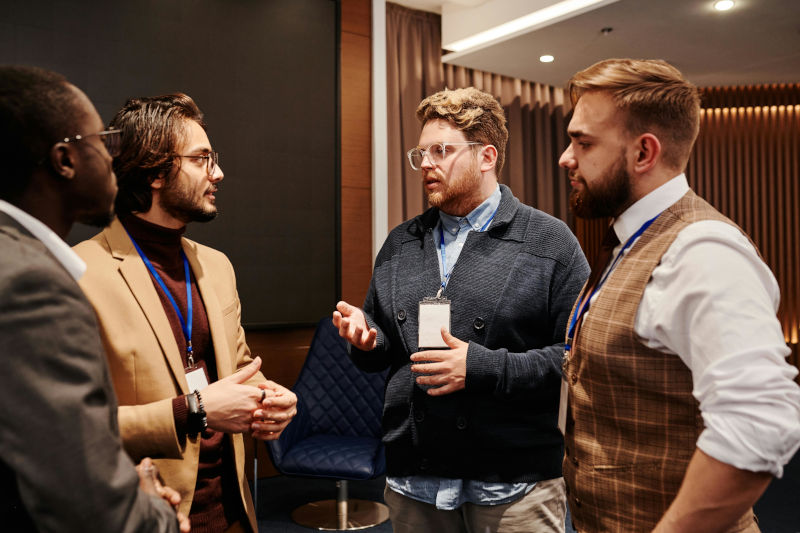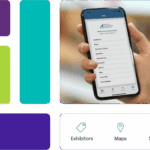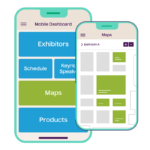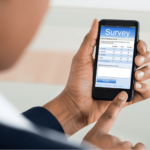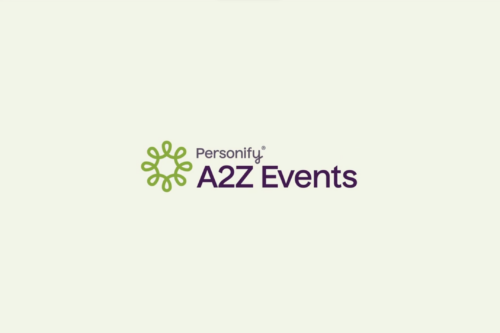Breakout sessions are a fantastic way to increase attendee engagement at any conference. These sessions, known for their dynamic and engaging nature, are key to amplifying attendee involvement and making your conference stand out.
Yet, crafting these sessions requires finesse – a well-executed breakout session can be the highlight of the conference, leaving attendees buzzing with excitement and new ideas. On the other hand, a session that misses the mark can detract from the overall experience.
Dive into our article to discover why many attendees often recall breakout sessions as the most impactful and cherished aspects of their conference experience. Get ready to explore the secrets of organizing vibrant breakout sessions that not only complement your main events but also leave lasting impressions!
What is a Breakout Session?
Breakout sessions are smaller meetings or workshops within a conference. In breakout sessions, attendees gather, brainstorm, and discuss various topics related to the conference’s theme, keynote speakers, and other content.
Breakout sessions typically are limited to no more than 50 people. The smaller the group, the greater the engagement. The sessions allow the audience to participate more actively, meet like-minded colleagues, share and learn new skills, and remain energized throughout the conference.
Breakout sessions can be in-person or virtual. Sometimes, attendees in the breakout sessions return to a larger group to share their thoughts and advance the discussion.
Breakout sessions are typically shorter than other conference events, lasting between 30 and 60 minutes. They are also less structured to allow for a free exchange of ideas. Attendees can divide themselves into breakout groups, or session facilitators may divide randomly or based on commonalities such as experience level or organization size.
The benefits of breakout sessions for your conference include:
- The opportunity to diversify and customize content based on the experience level or interests of attendees. In other words, a breakout session can allow you to target your content.
- Providing organic networking and collaboration opportunities.
- Reenforcing knowledge. Games and discussions about the theme of the conference or session help attendees apply the concepts introduced.
- Boosting engagement. The smaller number of people allows and encourages participants to interact with each other and the conference material.
- Providing a more in-depth look into some aspects of the conference material.
- Adding attendee value.
How Do Breakout Sessions Work?
Breakout sessions can elevate conferences and meetings. However, you should plan a conference breakout session carefully to ensure the maximum benefit for attendees.
Breakout sessions work by dividing attendees into various groups. If breakout sessions are held in person, attendees go to different tables or rooms for discussions. You can use attendee matchmaking features in your event management platform to help with this.
Online meeting hosts have several tools to facilitate breakout sessions, such as allowing the host to put participants into virtual breakout rooms, record sessions, and broadcast messages to them.
Whether virtual or in-person, the conference session host can allocate people to breakout rooms themselves or allow them to choose based on their interests.
Breakout session participants generally have several collaboration tools at their disposal, whether virtual or in-person.
What Equipment Will You Need for Breakout Sessions?
Sometimes all you’ll need for your sessions are people and chairs, but if you’re looking to make your sessions more engaging and memorable, there is some essential equipment you should plan for.
Whiteboards, Flip Charts, and Shared Note-taking Tools: These classic tools are indispensable for brainstorming and visualizing ideas. Whiteboards and flip charts offer a tangible way to map out thoughts and concepts, while digital shared note-taking platforms like Google Docs or Microsoft OneNote allow for real-time collaboration among virtual participants.
Access to YouTube and Other Video Platforms: Videos can be a powerful tool to introduce new concepts, provide context, or spark discussions. Platforms like YouTube offer a vast repository of educational and informational content that can be integrated into sessions for a more engaging experience.
Information-Sharing Tools: Tools like Slack, Microsoft Teams, or Trello facilitate seamless information exchange and organization. These platforms support file sharing, real-time messaging, and task management, making them essential for coordinated group work in virtual sessions.
Interactive Polling and Survey Tools: Tools like Poll Everywhere or SurveyMonkey can inject interactive elements into sessions. They are great for gauging opinions, conducting live polls, and generating instant feedback from participants.
Collaborative Brainstorming Software: Digital brainstorming tools such as Miro or MindMeister offer virtual whiteboards and mind-mapping capabilities, perfect for collaborative ideation and creativity in both in-person and virtual settings.
Video Conferencing Platforms: For virtual breakout sessions, platforms like Zoom, Microsoft Teams, or Google Meet are crucial. They offer features like breakout rooms, screen sharing, and virtual hand-raising, which are key for remote participation.
Document Collaboration Platforms: Google Workspace and Microsoft 365 enable multiple users to work on the same document, spreadsheet, or presentation simultaneously, fostering a collaborative environment regardless of physical location.
Feedback and Q&A Tools: Platforms like Slido or Mentimeter allow for anonymous feedback and live Q&A sessions, ensuring that every participant’s voice can be heard without the pressure of speaking up in a crowded room.
Types of Breakout Sessions Your Can Host
Breakout sessions can take many forms, depending on your objectives. For example, they can foster collaborations or help attendees learn through short presentations or activities. They can also be opportunities for attendees to network or breathe and have fun. The host designs sessions with the objective in mind.
Collaboration Sessions
A vital goal of conference breakout sessions is to foster collaboration among attendees. To achieve this, various interactive formats can be utilized, each designed to facilitate collective brainstorming and problem-solving.
Mind Map Sessions: These sessions revolve around mind maps, which are visual diagrams centering on a core concept with connected ideas radiating outwards. These diagrams can be adapted in numerous ways to suit the session’s theme. Participants work together to expand on the central idea, leading to a rich web of interconnected thoughts.
Think Tanks: Here, participants form groups to delve into specific themes or issues relevant to the conference. These think tanks are especially effective when they include a mix of experts and enthusiasts. Providing clear questions or objectives helps focus the discussions, leading to more productive outcomes.
Beyond mere collaboration, these sessions can also spark creativity and make the learning process more enjoyable.
Podcast or Presentation Creation: Participants could be tasked with collaboratively producing a podcast or a presentation on a designated topic. This activity not only reinforces learning but also allows attendees to explore creative ways of expressing ideas.
Team-Based Games: Incorporating games into breakout sessions is an excellent way to stimulate collaboration. These games should be designed to require teamwork, communication, and strategy, thereby fostering a sense of unity and collective problem-solving among participants.
Each of these session formats offers a unique approach to encourage collaboration, creativity, and engagement, making them integral components of a successful and memorable conference.
Learning Sessions
Breakout sessions with a focus on education and learning offer various innovative formats to engage participants actively while imparting knowledge.
Lightning Talks: These are concise, impactful presentations lasting typically less than five minutes. Presenters, who can be hosts or experts, touch on subjects they are passionate about or topics relevant to the conference theme. The use of slide decks can enhance the delivery of these bite-sized yet informative talks. For instance, the Society for American Archaeology successfully used this format, challenging presenters to explain an archaeological concept in just three minutes using one slide and one prop, creating sessions that were both informative and entertaining.
Q&A Sessions: These interactive segments allow participants to engage directly with each other or the host, asking any questions they might have. This format promotes an open, inquisitive learning environment.
Book Clubs: Here, a chosen bestseller related to your event, either fiction or nonfiction, is discussed in the context of the conference’s theme. Such sessions encourage deep analysis and understanding through group discussion.
Creative Learning Projects: For example, participants might be tasked with creating an e-zine on a specific topic. This blends creativity with learning, providing a hands-on approach to understanding and applying conference themes.
Drop-In Discussions: These are informal discussion groups that participants can join based on their interest. It allows for a personalized learning experience as attendees choose the topics most relevant to them.
Roleplaying: Engaging and fun, role-playing activities help reinforce learning concepts through interactive scenarios.
Mentoring Breakouts: Using breakout rooms or designated tables, these sessions facilitate one-on-one or small group mentoring, offering personalized guidance and deeper learning.
Gaming Sessions: Small group games related to the conference content can be both engaging and educational, helping to reinforce key concepts in a dynamic and enjoyable way.
These diverse session formats cater to various learning styles and preferences, ensuring that the educational aspect of the conference is both effective and memorable.
Networking Sessions
Breakout sessions dedicated to networking are great ways to foster professional connections and collaborations. Here are some creative and effective ways to enhance networking opportunities at your conference:
Speed Networking: This is a dynamic and fast-paced format where participants engage in brief one-on-one conversations. Each pair has a set time limit, often just a few minutes, to introduce themselves and exchange information before moving on to the next person. This format allows attendees to meet a large number of people in a short time, maximizing their networking opportunities.
Industry-Specific Meetups: Organize breakout sessions based on specific industries or interests. These focused groups enable participants to connect with others in their field, discuss common challenges, and share insights.
Topic Tables: Set up tables with specific topics or questions where attendees can join discussions that interest them. This format encourages in-depth conversations and connections over shared interests.
Interactive Workshops: Workshops that require group participation or problem-solving can be excellent for networking. Participants working together towards a common goal naturally foster professional connections.
Virtual Networking Platforms: For hybrid or virtual conferences, leverage digital tools that facilitate networking. Platforms like Wonder.me or Hopin provide virtual ‘rooms’ for participants to mingle and chat, mimicking the in-person networking experience.
Mentor-Mentee Matchups: Create sessions where more experienced professionals are paired with newcomers or less experienced attendees for a mentor-mentee interaction.
Social Media Integration: Encourage the use of social media hashtags or live tweeting during the event to facilitate online networking and engagement beyond the physical meeting space.
These networking session ideas are designed to create an engaging, interactive environment where attendees can build meaningful professional relationships, exchange ideas, and enhance their career networks.
How to Plan a Breakout Session
Understanding Your Audience: Gathering Attendee Data
Before diving into the specifics of planning a breakout session, it’s crucial to understand your audience. This begins with gathering data about the attendees. You can use pre-conference surveys, past event data, or social media analytics to gauge their interests, professional backgrounds, and expectations.
This data is instrumental in tailoring the content, format, and topics of the breakout sessions to the audience’s needs. By aligning the session themes with the interests of the attendees, you ensure higher engagement and satisfaction.
Deciding the Assignment Method: Choosing or Assigning Breakout Sessions
A key decision in the planning process is whether attendees will be assigned to breakout sessions or if they will choose their own. If you’re assigning sessions, utilize the attendee data to create meaningful pairings or groupings.
Consider factors like professional backgrounds, interests, and learning objectives. On the other hand, if attendees are choosing their sessions, offer a balance between pre-registered and walk-in sessions. Providing detailed information about each session in advance helps attendees make informed decisions and increases the likelihood of each session meeting its intended audience.
Room Preparation and Layout Design
The physical setup of the event room plays a pivotal role in the success of a breakout session. Each room should be equipped with necessary materials such as flip charts, screens, and writing tools. Seating arrangements are particularly important and should be thoughtfully designed to match the session’s objectives.
For instance, U-shaped or semicircle layouts encourage collaboration and discussion, while open spaces with flexible seating like bean bags are suitable for more dynamic, movement-oriented sessions. Anticipate the session’s needs and arrange the space accordingly to facilitate the desired interaction and learning outcomes.
Creating Content Clusters: Catering to Diverse Interests
Recognizing that attendees have a range of interests and preferences is vital in planning breakout sessions. Creating content clusters means developing a variety of sessions that cover a spectrum of topics, ensuring that there’s something for everyone.
This approach acknowledges the diversity within your audience and caters to different learning styles, professional interests, and personal preferences. This diversification not only enhances the attendee experience but also maximizes the value they gain from the conference.
Facilitator Selection: Guiding Rather Than Lecturing
The role of facilitators in breakout sessions cannot be overstated. The ideal facilitator is someone who can guide discussions effectively, encourage participation, and adapt to the dynamics of the group. They should have the skill to foster an inclusive environment where all voices are heard and valued.
Additionally, facilitators should be adept at summarizing discussions and drawing out key insights without imposing their viewpoints. The choice of facilitator can significantly influence the effectiveness and overall experience of the breakout session.
Establishing Clear Objectives for Each Session
Each breakout session should have well-defined objectives that guide its structure and content. These objectives should be communicated to attendees in advance so they know what to expect and can select sessions that align with their goals.
Clear objectives also guide the facilitator in steering the session and keeping discussions on track. This clarity ensures that the session remains focused and delivers on its promised outcomes.
Effective Time Management: Duration and Scheduling Time
management is a critical aspect of breakout session planning. The length of each session should be determined based on its objectives and content. Sessions should be long enough to cover the material thoroughly but not so long that they lead to fatigue or disengagement.
Strategically scheduling these sessions throughout the conference agenda is equally important. Placing them between plenary sessions helps maintain a dynamic and varied conference experience. Additionally, consider the timing of sessions to ensure they are accessible and attractive to attendees, avoiding early morning or late evening slots.
Balancing the Number of Sessions: Avoiding Overload
While offering a variety of sessions is beneficial, it’s important to avoid overwhelming attendees with too many options. An excessive number of sessions can lead to decision fatigue and reduce overall participation.
Striking a balance ensures that attendees have enough choice without feeling overloaded. This balance also allows for smoother logistical management and better distribution of resources across sessions.
Incorporating Relaxation and Non-Work-Related Activities
Acknowledging the intensity of conferences, it’s essential to incorporate elements of relaxation and leisure in the breakout sessions. Options like yoga, meditation workshops, or light-hearted activities provide a much-needed break from the more intensive learning and networking sessions.
These relaxed sessions cater to the attendees’ well-being and offer a chance to rejuvenate, enhancing their overall conference experience.
Closing Thoughts
Breakout sessions are a critical part of events and conferences and can make or break the conference. Well-planned and designed breakout sessions can help participants:
- Engage more fully with the material.
- Make valuable professional connections.
- Decompress and have fun.
- Build wellness into the conference.
- Explore specific interests with like-minded colleagues.
Breakout sessions can be of many types, from the traditional roundtables and brain-storming sessions to games, outdoor activities, pub quizzes, and lightning talks. The session’s objective is its design and time span. Careful advanced planning and communicating the session’s goals to participants will help ensure the session’s success.
A2Z Events provides a range of tools to help your conference and corporate event succeed, including technology tools for successful breakout sessions. The tools can provide attendee data, enabling a host to assign people to breakout sessions based on specific factors.
